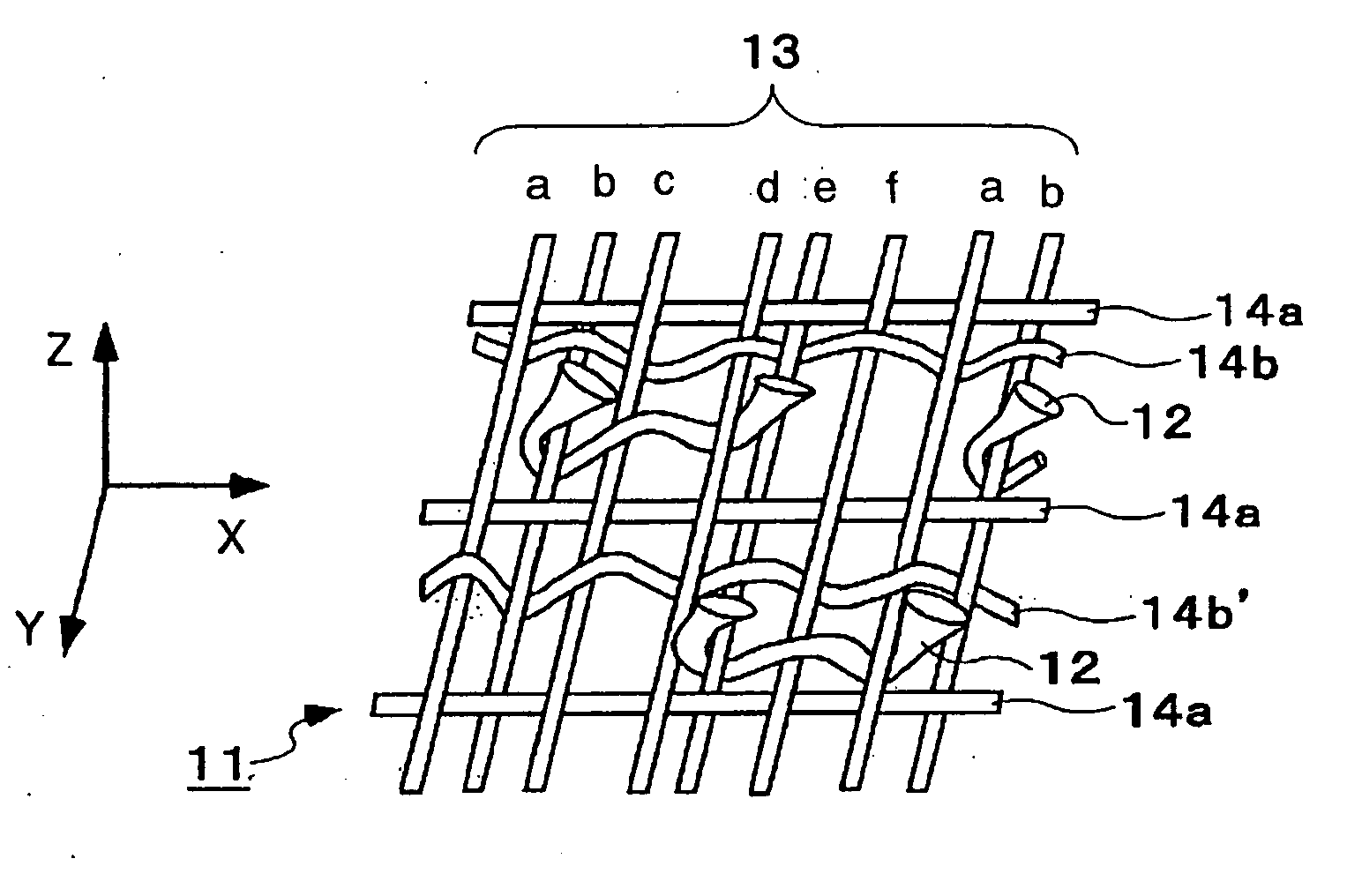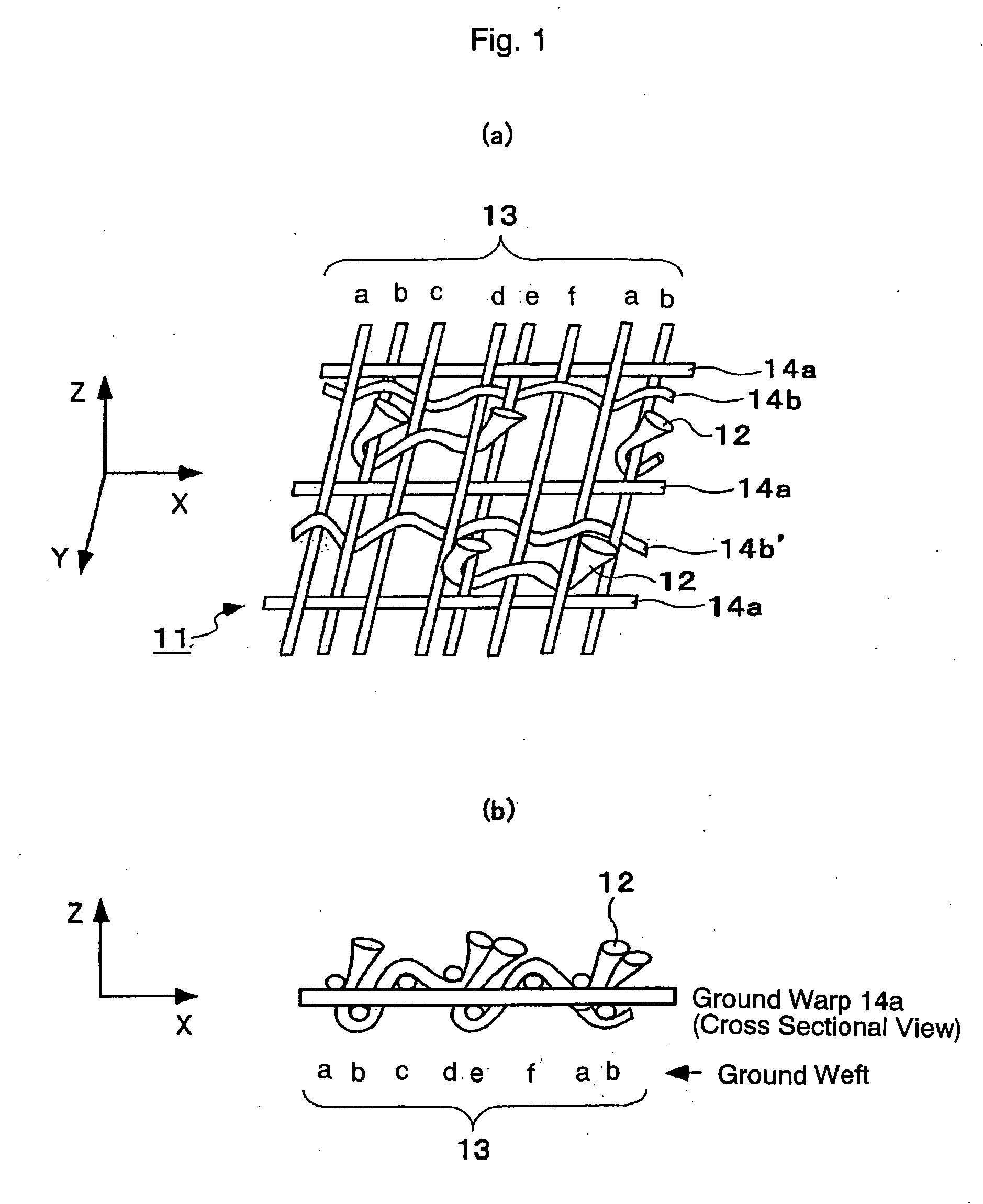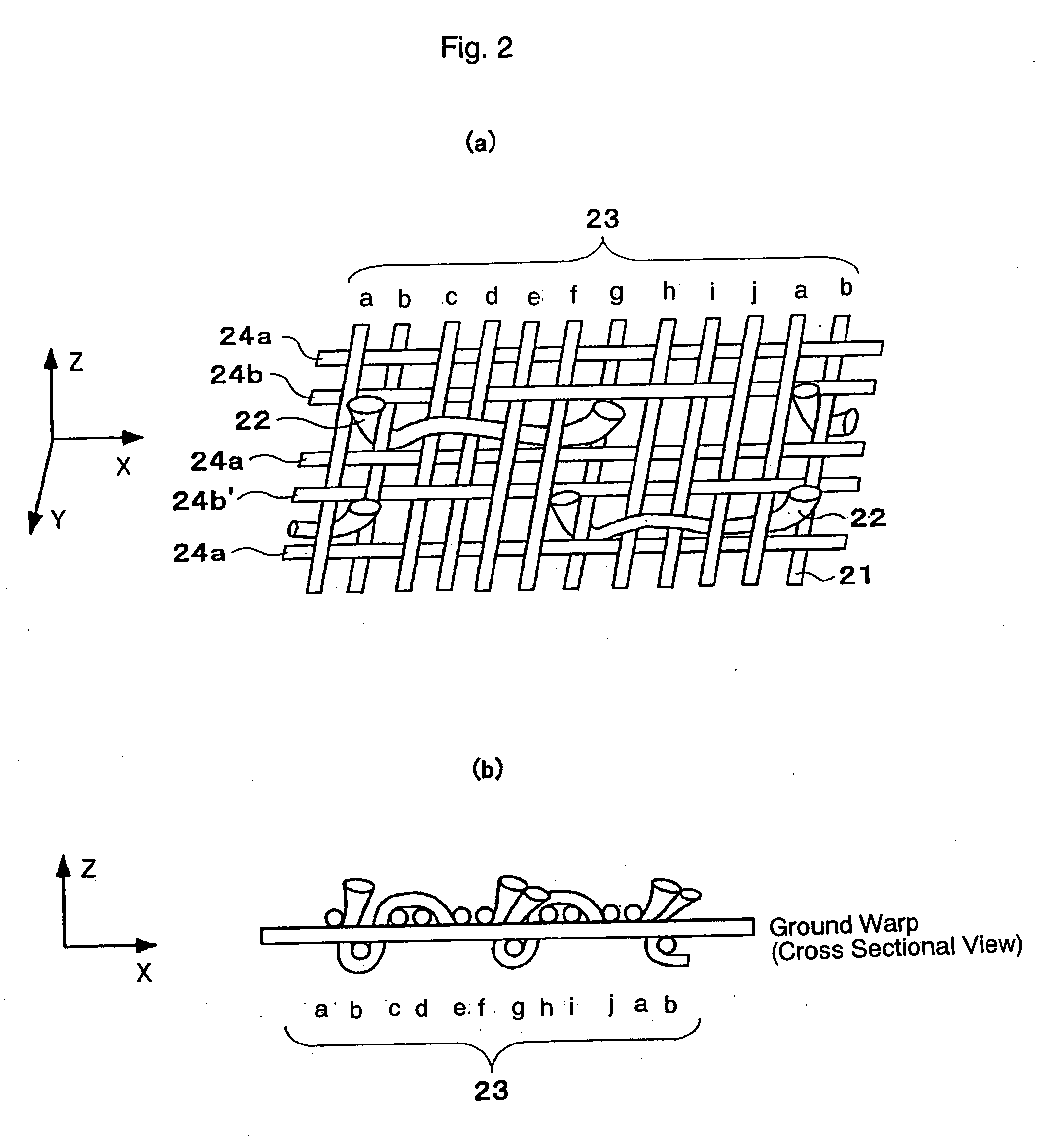Rubbing cloth for use in manufacturing liquid crystal display panels
a technology of liquid crystal display panels and rubbing cloth, which is applied in the field of rubbing cloth, can solve the problems of inability to use hydrophobic synthetic fibers or thermoplastic or hot-melt synthetic fibers as ground yarns, and inability to achieve uniform inclination of piles, etc., to achieve the effect of reducing the tendency of elongation, avoiding adverse influences, and long tim
- Summary
- Abstract
- Description
- Claims
- Application Information
AI Technical Summary
Benefits of technology
Problems solved by technology
Method used
Image
Examples
example a1 and a2
, AND COMPARATIVE EXAMPLE A1
[0100] [Sample Rubbing Cloths and Evaluation of Elongation]
[0101] Test pieces were prepared by cutting a velvet cloth to 5 cm wide and 30 cm long in such a manner that the cutting angle to the warp is 0, 5, 10, 15, 30 and 45 degrees. Elongation of each test piece at each angle both in the standard state and in the moist state was measured while applying 5 kg of tensile stress to each test piece. The elongation of the ground sheet texture (particularly humidity dependency and anisotropy) is known from this measurement.
[0102] In table 1, the textures of Examples A1 and A2 were both the same as that of the velvet of FIG. 7 which uses cupra rayon. The samples of Examples A1 and A2 used triacetate of 84 decitex for the pile and polyester of 110 decitex for the ground warps. The pile was 1.8 mm long. The sample of Example A1 used polyester of 84 decitex for the ground wefts and the sample of Example A2 used highly shrinkable polyester fiber of 84 decitex whose...
examples a3
TO A6
[0106] [Sample Rubbing Cloths and Evaluation of Pile Angle]
[0107] Table 2 shows the weaving conditions under which velvet was woven whose pile was provided with an inclination in accordance with the texture of velvet of this invention and the inclination angle of the pile (angle to the direction perpendicular to the ground sheet texture) observed from the direction of the test piece length.
[0108] Examples A3 to A6 all used polyester 2-ply yarn of 167 decitex or 110 decitex for the ground yarn. Weaving was performed with the tension of a high-tension beam for the ground warps set to 104 to 110 g and the tension of a low-tension beam for the ground warps varied as shown in Table 2, while varying the thickness and density of the wefts. All the samples used cotton 2-ply yarn of No. 60 comber for the pile and the pile was 2.4 mm long.
[0109] After weaving, the woven fabric was set at 150° C. and passed through the ordinary finishing steps of, for example, de-sizing scouring, drying...
examples a7
TO A9
[0111] [Sample Rubbing Cloths and Evaluation of Static Electricity]
[0112] Evaluation was made for the level of static electricity generated in the rubbing cloths of this invention. First, the alignment layers of a liquid crystal display panel were rubbed with each rubbing cloth at a humidity of 60%. Evaluation was made for the static electricity generated on the rubbing roller during the rubbing treatment by measuring the voltage while setting the depth of bite (d in FIG. 5) to 0.5 mm.
[0113] The sample of Example A4 shown in Table 3 had the same texture as that of sample of Example A4 shown in Table 2. In this evaluation, it corresponded to that for referential example (untreated sample). On the other hand, the samples of Example A7 to A 9 corresponded to examples of this invention which were subjected to conductive treatment. The sample of Example A7 was woven by warping, in yarn in low tension, at about 10 mm intervals, twisted yarn of a conductive fiber which was obtained b...
PUM
| Property | Measurement | Unit |
|---|---|---|
| Angle | aaaaa | aaaaa |
| Angle | aaaaa | aaaaa |
| Shrinkage | aaaaa | aaaaa |
Abstract
Description
Claims
Application Information
 Login to View More
Login to View More - R&D
- Intellectual Property
- Life Sciences
- Materials
- Tech Scout
- Unparalleled Data Quality
- Higher Quality Content
- 60% Fewer Hallucinations
Browse by: Latest US Patents, China's latest patents, Technical Efficacy Thesaurus, Application Domain, Technology Topic, Popular Technical Reports.
© 2025 PatSnap. All rights reserved.Legal|Privacy policy|Modern Slavery Act Transparency Statement|Sitemap|About US| Contact US: help@patsnap.com



